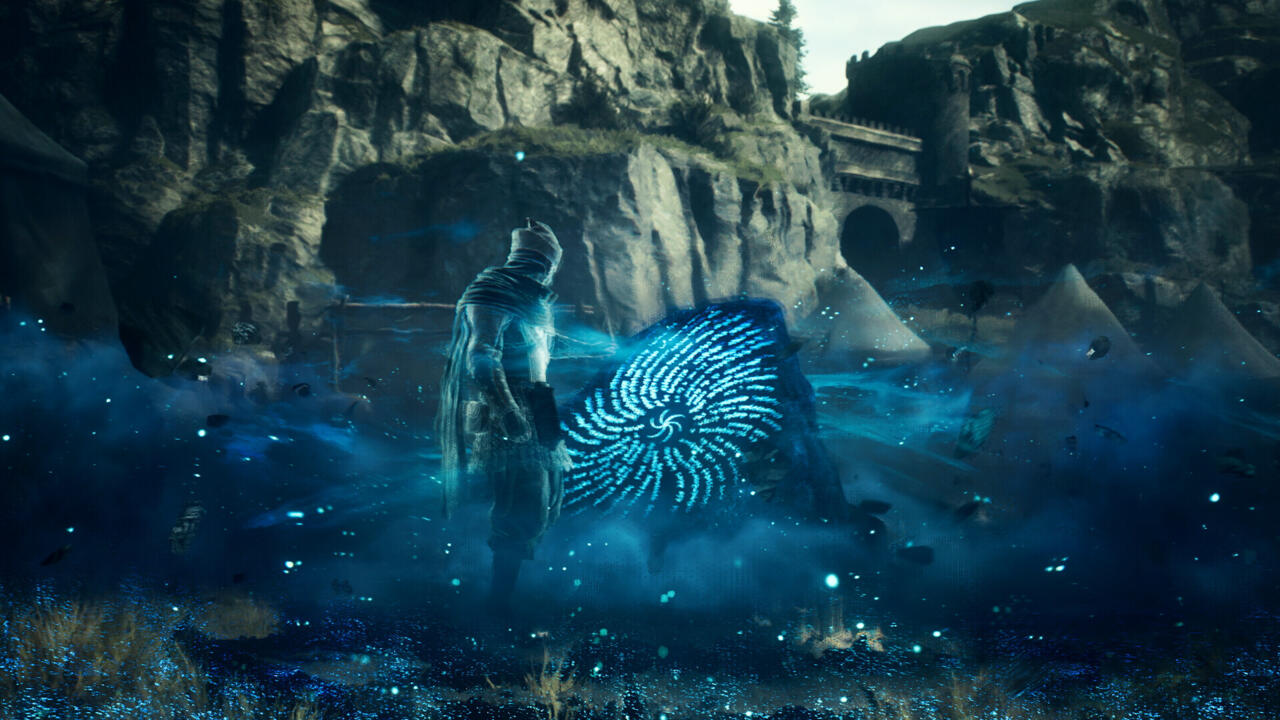Dragon’s Dogma 2 doesn’t have a traditional fast-travel system. For most open-world games, this would be a death sentence–an affront to the player’s valuable time. Yet somehow, Capcom has turned the absence of this quality-of-life feature into a resounding strength. It’s the game’s tremendous sense of adventure and discovery that accomplishes this. Every time you leave the relative safety of a village or city, there’s no telling what will happen; you just know it has the potential to be spellbinding and will be well worth your time.
As a sequel, Dragon’s Dogma 2 is an extension of everything the first game achieved 12 years ago. It’s an enchanting open-world RPG with varied, exciting combat and a player-created companion system that’s still unlike anything else. It doesn’t do much beyond what the original did, but advancements in technology have enhanced its anomalous strengths, breathing new life into its massive open world and the ways in which you and everything around you can interact with it. New ideas and innovation might not be at the forefront, but the things it does are still relatively distinct.
After a brief but intriguing prologue, your adventure begins in the country of Vermund, a land of lush green forests, alpine peaks, and the flowing currents of its many winding rivers. The royalty and noblemen of Vermund reside behind the fortified walls of its capital city, and it’s from this bustling location that you can board an oxcart to a small village in the north or a checkpoint city in the west. The latter sits on the border with Battahl, an arid land, home to the humanoid cat-like beastren, where gondolas provide an occasional route over the craggy canyons below. Beyond traveling via oxcart or climbing aboard one of these sky lifts, you’re left to explore this sprawling world on foot, traversing dense forests blanketed by canopies that blot out the sun, elven ruins carved into the sides of mountains, and shifting sands bathed in harsh sunlight and circled by deadly harpies.
There is a method of instant fast travel available, but it works in much the same way as it did in the first game. You can exhaust a costly resource known as Ferrystones to travel to any Portcrystal in the world, but these fast-travel points are few and far between–either as a permanent fixture or an item you can pick up and place anywhere you desire. You’ll use them sparingly and spend the vast majority of your time covering large swathes of land on your own two feet. Considering the 12-year gap between the original game and its sequel, this approach to fast travel and seamless exploration feels like an even bolder decision now than it did in 2012. The open-world genre has become more codified in the interim, yet Dragon’s Dogma 2 makes a concerted effort to ensure that the journey is just as important as the destination.
This is a game defined as much by the trek through an undulating gorge as it is the battle you encounter when you reach the bottom. The quests you embark on are diverse, tasking you with venturing off to rescue a boy who’s been taken by a pack of wolves or accompanying an elf on their rite of passage. These quests are sometimes generic but the way they play out is anything but. You’re never just engaging with one singular objective at a time; Dragon’s Dogma 2 is filled to the brim with emergent moments that consistently dazzle and surprise. I could regale you with myriad tales from my 40-hour adventure without even mentioning an actual scripted questline. Defined objectives might give you the impetus to head in a particular direction, but this then unravels a thread of distinct events that occur naturally, challenging you with enormous beasts to topple or piquing your curiosity with a cave tucked away to the side of the main pathway.
I once embarked on a lengthy journey that began with the usual ambushes from resourceful goblins and roadside bandits. I thought a first encounter with the three-headed, magic-wielding chimera would be the most noteworthy part of this venture, only for a monstrous griffin to swoop down and introduce an entirely new set of problems. After hacking at the chimera’s wailing goat head until it eventually collapsed in defeat, I focused all of my attention on the fearsome griffin. The immense force of this mighty creature made the nearby foliage rustle and shake every time it reared back and flapped its wings, but I managed to clamber on top of the beast and dig my sword into the back of its skull before it launched into the air and sent me spiraling to the floor.
After a time, the griffin made its escape, retreating back to the skies above, so I spent the night camping to recuperate my depleted health bar. I set out again in the morning, only to be interrupted by the same griffin, presumably with a newly formed vendetta against me. This time, after much hardship, I defeated the mythical creature before it could flee again, yet my journey was far from over. A pair of colossi sprang an unpredictable attack in the tight confines between two rocky outcrops, while the next night brought about a horde of undead skeletons whose glowing blue eyes pierced the suffocating darkness.
[Dragon’s Dogma 2 is] an enchanting open-world RPG with varied, exciting combat and a player-created companion system that’s still unlike anything else
None of these encounters related to one another or pertained to the quest I initially set out on, but that’s the magic of Dragon’s Dogma 2’s open world. You’re constantly pulled in numerous directions at once and it’s up to you to decide which avenues to pursue. It might be a quest given to you by a villager in need, an enticing structure looming on the horizon, or a locked gate and the potential to find an alternative way inside. Backtracking is fairly common, but no one journey is exactly the same as another, so it never feels like a chore when you’re retreading familiar ground.
Of course, none of this would work nearly as well if the game’s other elements weren’t up to snuff. Fortunately, combat is excellent across the board, providing you with a variety of unique vocations to choose from. These classes range from the sword and shield-wielding Fighter and long-range Archer, to new additions like the Mystic Spearhand–a melee/magic combo build–and the jack-of-all-trades Warfarer. It’s entirely viable to pick a vocation and play the entire game as that class, but you’re also rewarded for experimenting. Each vocation has special Augmentations to unlock which grant passive buffs that you can apply regardless of what class you’re currently using. This means you can make a Mage sturdier, or give a Warrior greater stamina usually reserved for the Thief.
Whichever vocation you choose, there’s a fantastic sense of impact behind your attacks. Axes and greatswords meet flesh with a glorious crunch–the game slowing down to let you bask in your most impactful strikes–while enemies burst into flames and tumble off cliffsides behind the power of a Sorcerer’s stave. There’s a hint of Devil May Cry to its most stylish and over-the-top moves, and hacking away at colossal beasts with slow but purposeful blows can’t help but bring to mind the protracted battles of Monster Hunter.
Even when you’re swirling through the air and conjuring piercing ice shards, the combat still feels grounded thanks to the world reacting realistically to everything that occurs within it. When I toppled a colossus and it stumbled towards a small chasm, it didn’t just fall down the gap, but grabbed onto the other side, creating a desperate, makeshift bridge. Only after hacking at its fingers did it lose its grip and tumble to its demise. The camera sometimes has trouble keeping up with all of this explosive action, usually because a mage has filled the screen with fire or ice. In that sense, it’s a somewhat acceptable trade-off. What’s not quite as forgivable is when the camera becomes unwieldy in tight interiors or when you’re clinging to the back of a terrifying beast, but at least these instances aren’t too frequent and are only a minor inconvenience when you consider the ensuing thrills of Dragon’s Dogma 2’s fantastic combat.
In terms of story, you’re once again cast as the Arisen, repeating a cycle that has occurred for generations. A fearsome dragon rules over the land and chooses you as a worthy challenger to its reign by plucking out your still-beating heart and consuming it. Your ultimate goal is to take up arms and slay the dragon, but before that can happen you need to build up your strength and contend with the disparate politics of both Vermund and Battahl. In Vermund, the Arisen is revered as a sovereign and champion of the people, tasked with protecting the land from the ominous shadow of the dragon. An imposter sits on your throne, however: a False Arisen, put in place by a queen who doesn’t want to lose her power. In attempting to claim what’s rightfully yours, you’ll gradually unravel a mystery that threatens to impact the fate of the whole world.
It’s a decent tale that propels your adventure forward, although it’s light on characterization, which contributes to a persistent feeling of detachment. This makes it difficult to care about the overarching narrative, aside from an interest in unraveling the core mystery. The awe-inspiring scale of its later moments somewhat makes up for its shortcomings, while exploring the differences between the cultures of Vermund and Battahl is also compelling. The beastren nation casts the Arisen as an outsider, fearful as they are of your entourage of pawns and the misfortune they portend.
Much like the first game, these user-created companions are the game’s most exceptional feature. Up to three pawns can join you on your journey, though one is a permanent fixture and your own creation. You can set their vocation and change it as you see fit, equipping skills and upgrades for them just as you would your own character. The other two members of your party are hirelings you can recruit and replace on a whim and are typically created by other players. Choosing which pawns to hire primarily comes down to a matter of party composition. Whether they’re leading from the front, imbuing your weapon with magic, or blanketing the battlefield in meteors, it’s hard not to love the impact they have on combat. But there’s also more to them than simply being hired guns.
The time a pawn spends with other players is retained in their memory. They might recall a treasure chest they opened in another Arisen’s world and then lead you to it, and they do the same when it comes to navigating quests as well. If you prioritize an objective and one of your pawns has completed it before, they’ll offer to lead you to wherever it is you need to go. Rather than being weighed down by having to constantly revisit the map, you can let a pawn naturally guide you, creating an ebb and flow to your adventure that removes the need for menu screens and waypoints. They can sometimes lose their way when you’re interrupted by combat, but I found that hitting the “Go” command would reset them back on the right path.
Pawns perform a similar function after defeating a certain number of a particular enemy type, too. If a pawn has sufficient experience beating, say, an ogre, they’ll relay pertinent information on weak points and the nature of their attacks. You can also find and then equip different specializations for your pawn, maybe granting them the ability to translate Elvish, or forage for materials so you don’t have to bother. They can still be overly loquacious at times, expressing child-like wonder at the world with a barrage of Ye Olde English dialogue. Their remarks are nowhere near as repetitive as before, though, and they’re much more personable this time around, chatting among themselves about other players they’ve traveled with and creating a palpable sense of teamwork and camaraderie.

Gallery
The most noticeable misstep derives from Dragon’s Dogma 2’s performance on PC. My current rig exceeds the recommended specifications (aside from the CPU), and the game generally runs at around 60fps using the game’s “High” preset. Sometimes it dips into the 40s and drops even lower inside villages and cities, but it’s certainly playable, if a little unstable. The problem is that this performance is consistent across all visual settings, which leads me to believe it’s a matter of poor optimization. I could’ve used the performance bump from lowering shadow quality and the like, but doing so has no effect. Ideally, this will be rectified with a day-one patch and driver updates, but it’s not ideal at the time of writing.
Even so, these performance issues did little to deter my love for this game. It’s not often that a cult classic gets the green light for a sequel, especially 12 years after the original game was released. Capcom hasn’t tried to make Dragon’s Dogma 2 more palatable to potentially attract a wider audience, either. It stuck to the first game’s core values and expanded upon them to create a bigger and better game that consistently delights in its approach to seamless exploration and the thrill of adventure. This means it feels very familiar in a lot of ways, but it’s a game for those who fell in love with the original, despite its flaws, and will hopefully find an entirely new audience who perhaps never gave the first game a chance. Even after 40 hours, my heart continues to grow fonder for this special game. It’s an exceptional achievement that’s quite unlike anything else, and I wouldn’t hesitate to place it amongst the pantheon of Capcom’s very best.























